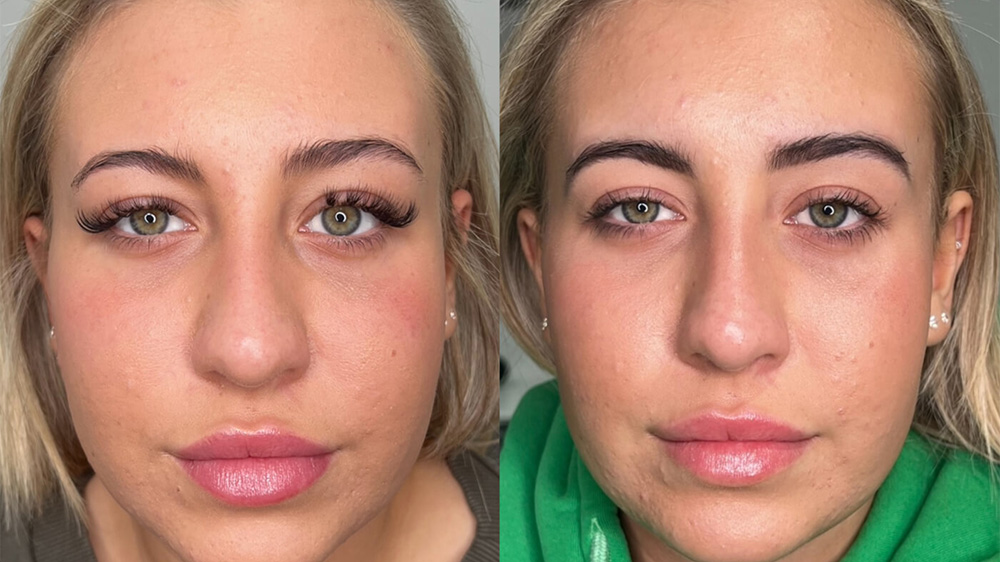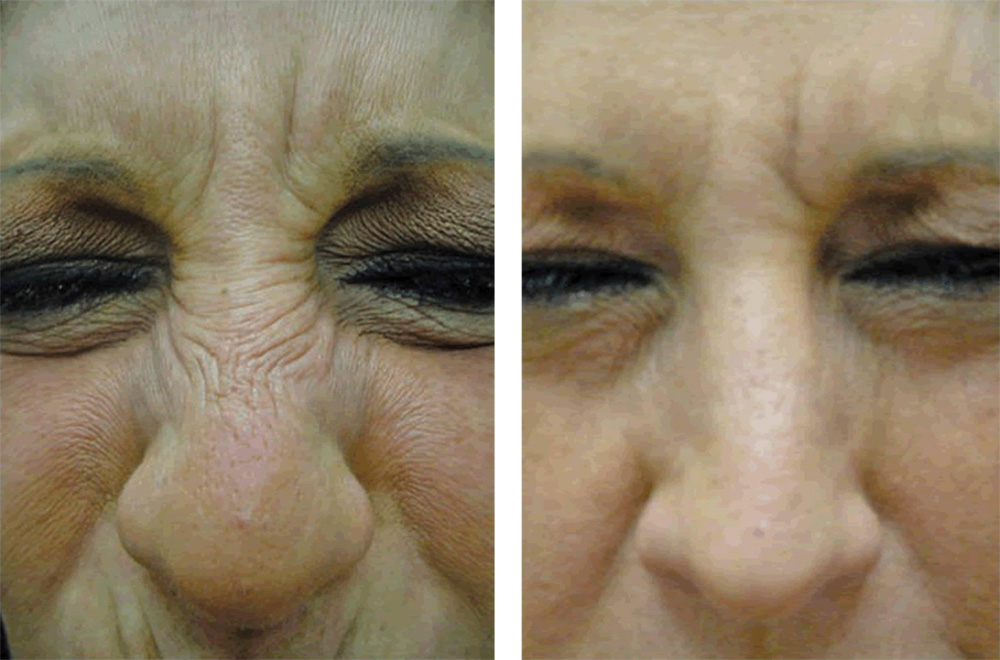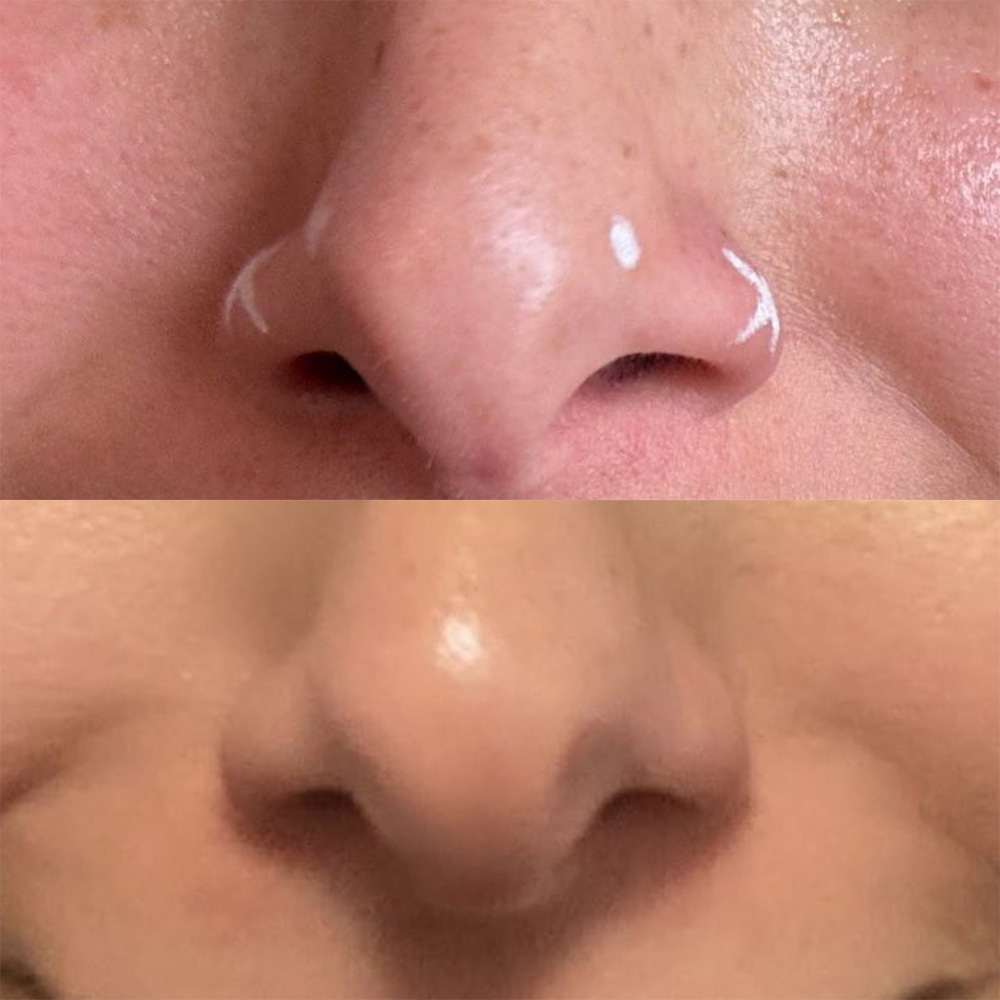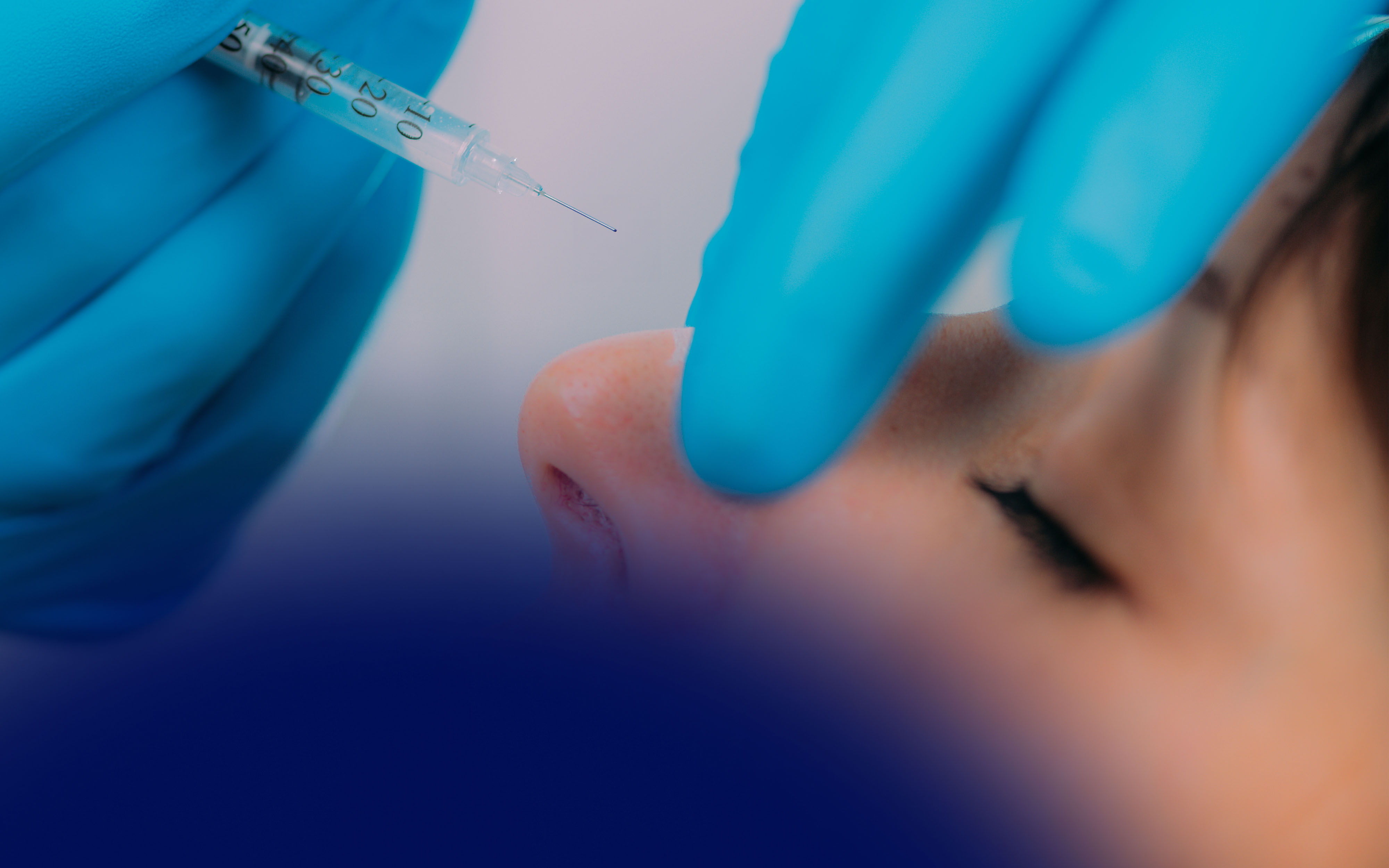
Nose Botox, also known as nasal botulinum toxin injections, has emerged as a minimally invasive option for patients seeking subtle nasal refinement without surgery. While often marketed as part of a “non-surgical nose job,” it is important to recognize that its role is primarily adjunctive and corrective, rather than structural.
Key Takeaways
- Nose Botox addresses muscle-related nasal concerns, not structural deformities.
- Indications include bunny lines, tip droop, and nasal flare reduction.
- Results are temporary, lasting 2-4 months.
- Precision, micro-dosing, and patient selection are critical.
What Is Nose Botox?
Nose Botox involves injecting botulinum toxin into specific nasal muscles to relax dynamic activity that contributes to cosmetic concerns. Common target muscles include the depressor septi nasi and alar muscles, which influence tip position and nostril flaring.
Unlike fillers or surgical rhinoplasty, nasal Botox does not alter bone or cartilage. Instead, it refines motion-related imperfections and creates temporary improvements. Results are subtle, making it best suited for patients who prefer minimal downtime and gradual enhancement rather than dramatic change.

When Nose Botox Can Help
One of the most common uses of nose Botox is for bunny lines Botox treatment. These fine wrinkles appear on the lateral nose when smiling or laughing and can be softened effectively with targeted injections.
Nasal tip Botox can also elevate a drooping nasal tip by relaxing the depressor septi nasi muscle. Similarly, nasal flare Botox reduces excessive nostril flaring, an aesthetic concern for many patients. In some cases, Botox is used adjunctively after fillers or rhinoplasty to fine-tune results, ensuring balanced outcomes.
How Nose Botox Works
The mechanism of nose Botox is consistent with other neuromodulator applications. Botulinum toxin blocks acetylcholine release at the neuromuscular junction, reducing muscle contraction. The result is smoother skin and subtle lifting of the nasal tip.
Patients typically notice changes within 3-7 days, with full results at around two weeks. The effect lasts between 2 and 4 months, after which repeat injections are required to maintain results. This predictable timeline allows injectors to counsel patients on both the benefits and maintenance needs of nasal Botox.

Botox Nose Job Limitations
Despite its popularity, practitioners must clearly communicate Botox nose job limitations. Botox cannot correct dorsal humps, crooked noses, or significant contour irregularities. Structural issues involving bone and cartilage remain beyond its scope.
Additionally, results are temporary and require ongoing treatments. While photographs may highlight improvements such as Botox nose slimming before and after outcomes, it is essential to emphasize that these are refinements, not permanent corrections.
Evaluating Risks in Nose Botox Procedures
Although generally safe, nose Botox is not without risks. Understanding potential side effects and complications is essential for both practitioners and patients:
- Minor side effects: Patients may experience short-term redness, slight swelling, bruising, or sensitivity around the injection points. These effects are typically mild, self-limiting, and resolve without the need for medical treatment.
- Functional complications: Over-relaxation of nasal muscles may alter smile dynamics or cause subtle changes in nasal breathing. Proper dosing and precise placement minimize these risks.
- Rare risks: In uncommon cases, toxin diffusion can affect adjacent muscles, leading to unintended outcomes such as asymmetry. Mastery of anatomy and micro-dosing techniques reduces this likelihood.
- Contraindications: Patients who are pregnant, breastfeeding, have neuromuscular disorders, or have known allergies to botulinum toxin should not receive nasal Botox.
Mastery of nasal anatomy and careful micro-dosing, as emphasized in the Botox Complications Masterclass, are essential for avoiding complications and ensuring safety.

Expert Tips for Non-Surgical Nose Botox Application
Experienced injectors recommend starting with conservative doses, typically 2-6 units depending on indication, to minimize unwanted diffusion. Precision is paramount, as even small variations in placement can affect results significantly. Expanding expertise through HubMed Ed aesthetic medical training or expert-led Botox training helps injectors master advanced techniques and patient communication.
Combining nose Botox with hyaluronic acid fillers provides more comprehensive outcomes when structural adjustments are desired. It is also vital to set realistic expectations: patients must understand that nose Botox achieves temporary, subtle refinements, not dramatic reshaping. Pre-treatment photography and clear communication are key to maintaining patient satisfaction.

Who Is the Ideal Candidate for Nose Botox?
Selecting the right patient is one of the most important steps in achieving successful results with nose Botox. While the procedure is versatile, it is not universally suitable. Below are the key characteristics of ideal candidates:
- Patients with minor dynamic concerns: Best suited for those with bunny lines, mild nasal flaring, or a drooping nasal tip caused by muscle activity rather than structural irregularities.
- Individuals seeking temporary improvements: Nose Botox lasts 2-4 months, making it appropriate for patients who are comfortable with ongoing maintenance sessions.
- Patients with realistic expectations: Those who understand that results will be subtle and not comparable to surgical rhinoplasty or filler-based reshaping.
- First-time patients exploring options: Ideal for individuals curious about nasal refinement but not ready to commit to permanent procedures.
- Healthy candidates: Patients without contraindications such as pregnancy, lactation, neuromuscular conditions, or botulinum toxin allergy.
- Motivated by natural-looking results: Suitable for patients who prioritize refinement over dramatic changes and prefer a minimally invasive approach.
By carefully screening candidates, injectors can improve satisfaction rates, minimize risks, and build long-term trust with their patients.

In Conclusion
Nose Botox is a refined, targeted treatment that can enhance nasal appearance when used appropriately. It works best for dynamic concerns such as bunny lines, flaring, and drooping tips, but does not replace structural interventions. Success relies on precision, patient education, and thoughtful integration with other procedures.
A professional wondering how to become a Botox injector can improve their technical mastery by completing appropriate HubMed Ed courses. Through continuous education and combining clinical expertise with aesthetic judgment, practitioners can offer safe, effective, and natural-looking results in non-surgical nose Botox.
FAQs
How long does nose Botox last?
Nose Botox results typically last 2-4 months. Repeat treatments are necessary to maintain effects, as muscle activity gradually returns.
Can nose Botox go wrong?
Yes, if improperly administered. Incorrect placement or dosing may affect nearby muscles, altering smile dynamics or nasal function. Choosing an experienced injector minimizes risks.
What does Botox look like after 10 years?
When performed correctly, long-term use does not damage nasal tissues. Patients may experience less pronounced lines over time due to reduced repetitive muscle activity.
How often should I use nose Botox?
Most patients return every 3-4 months for maintenance. Treatment intervals depend on muscle strength, metabolism, and desired results.
Does nose Botox lift the nasal tip?
Yes, nose tip Botox can provide a slight lift by relaxing the depressor septi nasi. The effect is modest and temporary.
Will Botox slim your nose?
Botox may create the appearance of a slimmer nose by reducing flare and refining contours, but it does not physically change bone or cartilage structure.
References:
- Schavelzon D, Blugerman G, Wexler G, Martínez L. Botulinum toxin in the nasal area. In: Miniinvasive Techniques in Rhinoplasty. March 2016. doi:10.5772/62070. https://www.researchgate.net/publication/311980498_Botulinum_Toxin_in_the_Nasal_Area
- Modarresi ZS, Beshkar M, Bakhtiari Z. The use of botulinum toxin for nasal esthetics: a systematic review. Indian J Otolaryngol Head Neck Surg. 2024;76(5):3757-3765. doi:10.1007/s12070-024-04890-7. https://pubmed.ncbi.nlm.nih.gov/39376434/
- Yi KH, Lee JH, Kim SO, Hu HW, Lee HJ, Choi YJ, Ahn TH, Kim HJ. Botulinum neurotoxin injection for treating plunged nose and post-rhinoplasty: anatomical perspectives of depressor septi nasi, nasalis, levator labii superioris alaeque nasi muscle. Anat Cell Biol. 2023;56(4):409-414. doi:10.5115/acb.23.054. https://pmc.ncbi.nlm.nih.gov/articles/PMC10714083/
Disclaimer:
This article is intended for licensed medical professionals. All protocols, dosages, and treatment insights referenced herein are based on published literature. The content is not intended to encourage application, diagnosis, or self-treatment of unlicensed individuals, and should not be used as a substitute for the clinical judgment of a qualified healthcare provider.

